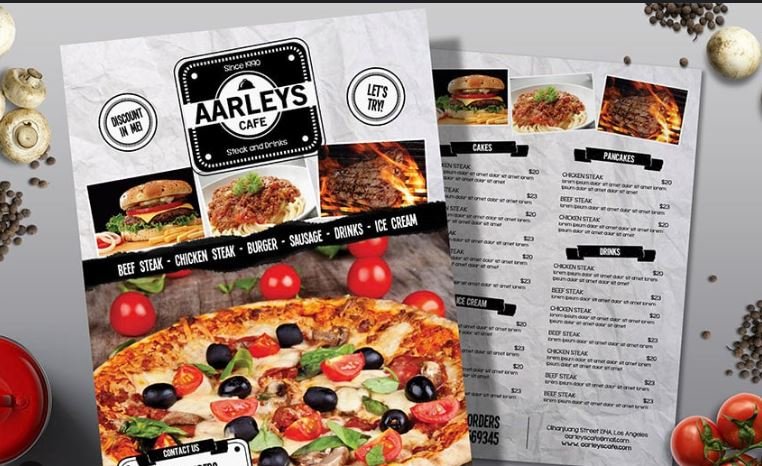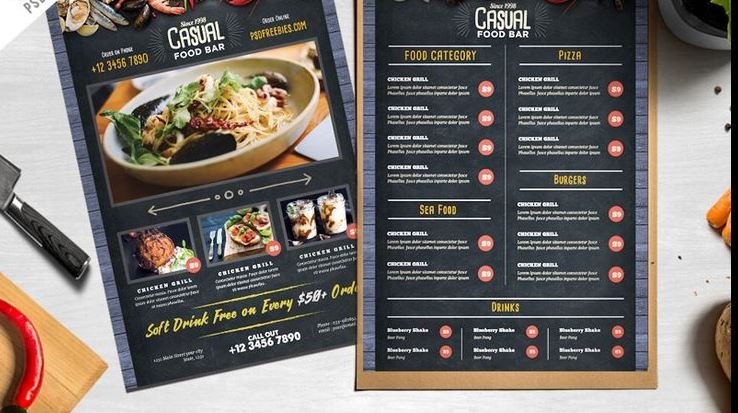The visual appeal of a restaurant’s dishes and the design of its menu play crucial roles in shaping customer perceptions and influencing their dining choices. In a highly competitive culinary landscape, these elements can significantly impact a restaurant’s success. Whether through enticing food photography, strategic menu layout, or thoughtful design elements, how a dish is presented and described can make or break a diner’s experience. Here, we explore the importance of visual appeal and menu design in the restaurant industry.

The Power of First Impressions
First impressions are lasting, and the visual appeal of a dish often determines whether a customer decides to order it. High-quality food photography on menus and promotional materials can make dishes look more appetizing, encouraging diners to try them. Bright colors, attractive plating, and attention to detail in food presentation can evoke positive emotions and stimulate appetite. A dish that looks appealing is more likely to be perceived as delicious and well-prepared.
Strategic Menu Layout
The design and layout of a menu can guide customers through their dining experience and influence their choices. Effective menu design involves more than just listing items and prices; it requires careful consideration of visual hierarchy, spacing, and categorization. Highlighting signature dishes, using eye-catching fonts, and incorporating images can draw attention to specific items. Additionally, placing high-margin dishes in prominent positions, such as the top right corner of a menu page, can boost sales and profitability.
Descriptive Language
The words used to describe menu items are just as important as their visual presentation. Vivid and evocative descriptions can enhance a diner’s anticipation and enjoyment of a dish. Descriptive language that highlights the flavors, ingredients, and preparation methods can make dishes sound more appealing and sophisticated. For example, describing a dessert as “decadent chocolate lava cake with a gooey molten center” is more enticing than simply listing “chocolate cake.”
Consistency in Branding
Consistency in visual and menu design reinforces a restaurant’s brand identity. The colors, fonts, and overall style of a menu should align with the restaurant’s theme and ambiance. This cohesion creates a seamless dining experience and helps build brand recognition and loyalty. A well-designed menu that reflects the restaurant’s personality can leave a lasting impression on customers and encourage repeat visits.
Enhancing the Dining Experience
A thoughtfully designed menu can enhance the overall dining experience by making it easier for customers to navigate their choices. Clear sections, logical flow, and readable fonts contribute to a pleasant and stress-free ordering process. Additionally, incorporating elements like dietary icons (e.g., vegan, gluten-free) and chef’s recommendations can cater to diverse customer needs and preferences, further enhancing their experience.
Psychological Impact
The visual appeal and design of a menu can also have psychological effects on customers. For instance, using high-quality images and descriptive language can create a sense of anticipation and excitement. Conversely, cluttered or poorly designed menus can overwhelm customers and detract from their dining experience. The strategic use of colors, fonts, and layout can evoke specific emotions and set the tone for the meal.
Case Studies: Success and Failure
Numerous case studies highlight the impact of visual appeal and menu design on restaurant success. For example, a restaurant that revamped its menu to include professional food photography and more descriptive item names saw a significant increase in sales and customer satisfaction. Conversely, a poorly designed menu with lackluster descriptions and unappealing visuals can lead to decreased customer interest and lower sales.
Conclusion
The visual appeal of dishes and the design of a menu are critical components of a restaurant’s overall success. High-quality food photography, strategic menu layout, descriptive language, and consistent branding can enhance customer perceptions and influence their dining choices. By prioritizing these elements, restaurants can create memorable dining experiences, boost customer satisfaction, and ultimately drive sales.
